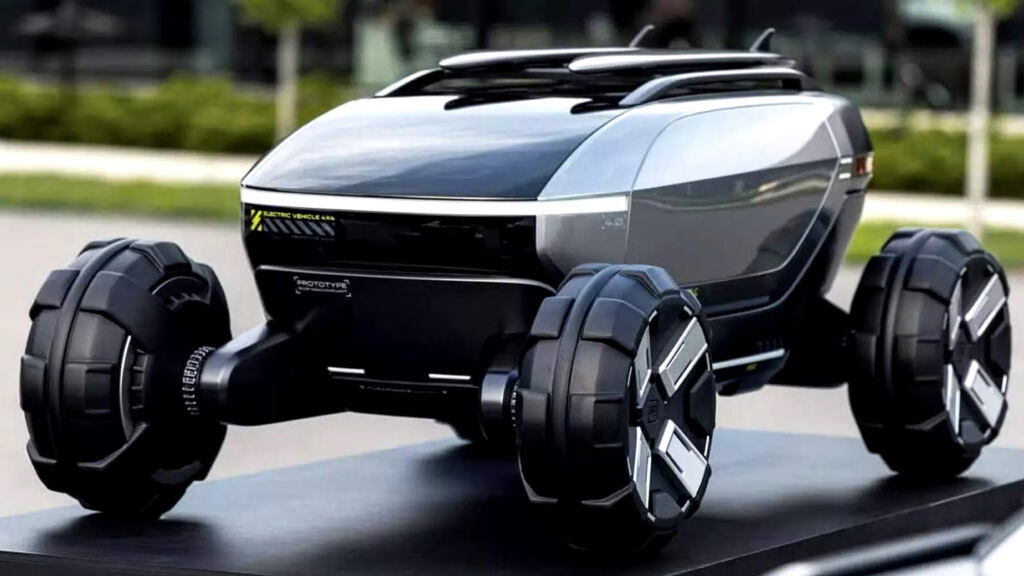What Do GM’s Wild New Concepts Actually Tell Us About the Future of Cars?
When GM Design recently dropped a series of jaw-dropping concept vehicles on Instagram, it wasn’t just a flex for the design team—it was a window into what driving (and flying) might look like in the next decade or two. These aren’t just sketches destined for a dusty archive. They’re scale models on display at EPCOT in Florida, inviting anyone with a ticket to Walt Disney World to peek at tomorrow’s mobility. So, what’s the real story behind these five concepts, and why should you care? Let’s break it down.
Why Are Automakers Like GM Creating Such Radical Concepts?
You might wonder: if these vehicles aren’t heading to production, what’s the point? The answer is simple—freedom. Concept cars have always been playgrounds for designers, but digital tools and rapid prototyping have blown the doors wide open. GM’s latest batch includes everything from a windshield-free sports car to a VTOL (vertical takeoff and landing) flying machine. By ditching the constraints of cost, safety regulations, and even gravity, designers can chase ideas that might seem bonkers today but could shape the cars, trucks, and air taxis of tomorrow.
This isn’t just about showing off. According to a 2023 report from the Center for Automotive Research, automakers that invest in blue-sky concept work often see those ideas trickle down into real-world products—sometimes in surprising ways. Think of how gullwing doors or heads-up displays went from sci-fi to showroom. GM’s concepts are less about what’s coming next year and more about what’s possible if we let our imaginations run wild.
What’s the Story Behind Each of These Five GM Concepts?
Let’s take a quick tour. The P1 is a minimalist, open-air sports car—no windshield, central driving position, and a look that screams “track day with a side of fresh air.” It’s a spiritual cousin to the 1996 Ford Indigo concept, but with a modern twist: exposed wheels, slim LED lighting, and a tub-like body that’s all about the essentials.
Then there’s the P2, a low-slung EV that’s obsessed with aerodynamics. Its glass canopy is raked so steeply it almost looks like a spaceship, and the roofline flows into a recessed tail. Only two doors, and they open upwards—because why not? The side graphics hint at an “AI Pilot” system, suggesting a future where the car does most of the driving, freeing you up to enjoy the ride (or maybe just nap).
The P3, dubbed the Utility Concept, is GM’s answer to the question: what if hatchbacks and crossovers got a sci-fi reboot? Wheels pushed to the corners, a monovolume body, and metallic accents slicing through the body-colored glasshouse. It’s practical but still has that “I could star in a Marvel movie” vibe.
P4 is where things get gnarly. This electric off-roader is all about adventure—massive tires, sky-high ground clearance, and a capsule-shaped cabin built for the wild. Details like surfboard-ready roof rails and full-width LED lighting make it clear this isn’t your average suburban SUV.
Finally, the P5 takes to the skies. It’s a VTOL flying vehicle that looks like a cross between a drone and a futuristic shuttle. Two sets of fans, a flat floor, and styling cues that tie it back to the rest of the lineup. It’s a bold nod to the growing buzz around urban air mobility, a sector that analysts at Morgan Stanley predict could be worth $1.5 trillion globally by 2040.
Are These Concepts Just Eye Candy, or Do They Signal Real Change?
It’s easy to dismiss wild concepts as nothing more than design exercises. But history tells a different story. Many of today’s automotive staples—hybrid powertrains, advanced driver assists, even the basic shape of crossovers—started as out-there ideas on a designer’s sketchpad. GM’s willingness to showcase vehicles that look more at home in a video game than a dealership is a sign of a company thinking beyond the next sales quarter.
There’s also a strategic angle. By displaying these models at EPCOT, GM isn’t just wowing car geeks. They’re planting seeds in the minds of millions of visitors, many of them kids, about what mobility could be. That’s long-term brand building at its finest.
How Do These Concepts Reflect Broader Trends in Mobility?
Look closer, and you’ll spot some common threads. Electrification is a given—every concept is an EV or a flying vehicle, reflecting the industry’s pivot away from fossil fuels. The focus on AI and autonomy in the P2 echoes the real-world push for smarter, safer cars. And the P5’s VTOL design taps into the growing excitement (and investment) around urban air mobility, with companies like Joby Aviation and Archer Aviation already conducting test flights in the US.
Even the off-road P4 isn’t just about looking tough. Its design hints at a future where adventure vehicles are electric, connected, and built for a new generation of outdoor enthusiasts who want capability without compromise.
Can You See These Concepts in Person?
Absolutely. If you’re headed to Walt Disney World, swing by EPCOT. GM’s scale models are on display, and the company has even revamped the iconic Test Track ride to reflect its vision of the future. It’s a rare chance to get up close with vehicles that might shape the next era of transportation—even if they never hit the assembly line exactly as shown.
The big takeaway? The future of mobility isn’t about perfection—it’s about smarter adjustments and bold ideas. Start by looking at the world a little differently this week, and you’ll likely spot the seeds of tomorrow’s breakthroughs before the month is out.

